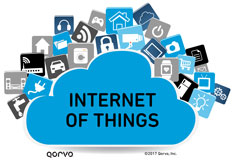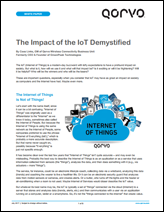A Day in the Life: How IoT Is Changing the World of Sports and Health (Part 5 of 5)
May 4, 2018
This blog is the last of a five-part series that looks at the impact of the Internet of Things (IoT) on society.
Experts say that an Olympic gold medal begins with good genes. That remains true, but today’s technology for fitness monitoring and integrated applications are a great help to push that extra mile, gain that extra second or lose that extra pound.
The IoT can have a big impact for sports and health — particularly
for professional athletes. Let’s take a closer look at a day in the
life of a professional cyclist and the IoT applications that support her
today. (She also happens to be the daughter of our author!)
Monitoring made easier with the IoT
The first thing in the morning, at the instant the athlete opens her eyes, she will tap her Fitbit and measure her pulse at rest rate. Great cyclists generally have an extraordinary heart capacity, and a lower heart rate at rest typically implies more efficient heart function and better cardiovascular fitness. It can also indicate if the athlete has any infections or circulatory problems.
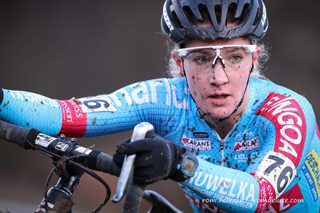
Author's daughter, Alicia Franck, a professional cyclist in
Europe
This morning, our athlete has a very low 37 bpm (beats per minute): all clear for a good training day.
She starts off with a well-balanced breakfast of granola, fruit and yogurt for a total of 550 kcal. She enters the food and its weight in a food calculator app and shares it via the IoT with the nutritionist who’s a part of her athletic support team.
The nutritionist then optimizes our athlete’s food intake for the
required output, based on three types of days: training, racing or rest. And
indeed, less weight on the bike equals less resistance and better results, so
continuous monitoring and follow-up are key.
Honing a training plan in the lab
Before our cyclist ever gets on her bike for the day’s training ride, the cyclist’s support team has previously analyzed both her equipment and her fitness levels to maximize every possible variable:
- Fitness and endurance tests. Professional cyclists are under continuous medical supervision and do several endurance tests per year to measure their progress while training for the start of the season or for specific events, like a world championship. These tests can include maximal oxygen consumption (VO2 max), lactate threshold and a total body scan to measure the athlete’s fat percentage. The results of these tests are shared with the cyclist, sports doctor, trainer and nutritionist, who all collaborate to shape the perfect sports body for our athlete and create optimized training schedules and nutrition plans.
- Equipment. The training team uses a bicycle fitting lab and wind tunnel to test and optimize the position and geometry of the cyclist on her bicycle. The variables to adjust are countless: pedals, cleats, cycling shoes and crank arm length. The selection of saddle, its height and tilt, the type of cycling shorts for comfort. Handlebars, brake levers, and hoods. A bike is symmetrical, but the human body is not — and every millimeter of adjustment can impact a professional cyclist’s results.
All this real-time information shapes the cyclist’s individual
training plan so that she can focus on what’s most important: her
riding.
Our cyclist undergoing wind tunnel tests
New levels of training efficiency with IoT
When it’s time to start her training session, our cyclist will put on her training clothes, shoes and helmet. But her equipment is optimized by technology and the IoT:
- Her smart helmet has bone conduction audio technology, which turns audio into vibration that goes straight to the inner ear from the tabs of the helmet straps, through the cheekbones, bypassing the ear drum. The result is amazing: You hear music and voice navigation “inside your head” and the cyclist can still hear the ambient sounds of traffic to maintain situational awareness for safety. It’s the safest way to listen to music while riding.
- Her GPS computer/navigator tracks her location and is linked to her heart monitor.
- Once on her training ride, she uses a power meter — a device fitted to the bike that measures the power output of the rider — to quantify her workout and give instant feedback. Cycling experts believe a bottom bracket power meter system is the most accurate type, and will help cyclists to accurately measure progress, without the impact of external factors like weather that can influence the result.
But the cyclist isn’t alone on her ride — her support team can
monitor it in real time using the IoT. The trainer can follow the cyclist with
the GPS tracker as training sessions are automatically shared as live streams.
The trainer checks heart rates, speed, power — and discipline. Nothing
goes unnoticed, and skipping a training becomes very visible.
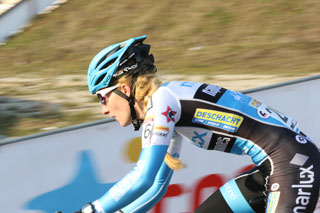
Alicia Franck, a professional cyclist in Europe
In the past, trainers only looked at average speed during training sessions. Today, they look at distance and speed, power output and explosivity, velocity, resistance or help from tail- or headwind, and many other variables (like weather) — which can all influence the result of a training session.
Athletes today have access to a plethora of technology, tools, instruments and applications to measure performance and progress and share it with their support and training team:
- Wireless communication (GPS tracking, Bluetooth® technology in the helmet and heart monitor, ANT+ for the electronic gears and more) enhances user comfort and safety.
- Dashboard applications look at the bigger picture.
The team analyzes all gathered data to further optimize the most precious
instrument the cyclist has: her body.
Good genes can only do so much — but the IoT can help enhance them
No one is born to be a world-record holder. People are born with certain abilities and talents, but they must work with those abilities to become the best. When technology kicks in to optimize an athlete’s performance and bicycle, in close collaboration with the supporting medical and care team, the IoT has a nice growth path in sports.
And for the rest of us who aren’t professional athletes, connected IoT devices and applications can still bring the same benefits. We can use different apps and wearable devices like a Fitbit or Apple Watch to track our own fitness, monitor progress toward goals, share our achievements and stay motivated, as well as convey information to health care providers. At its heart, the IoT can bring more information and more data for sports and health — no matter your fitness level.
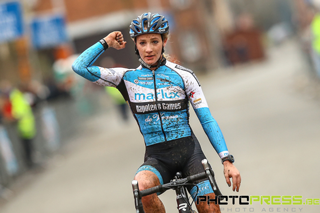
Read all the blogs in our series about the IoT's impact on society:
- Part 1: Labor and jobs
- Part 2: Privacy and security
- Part 3: Energy efficiency
- Part 4: Electric motors
- Part 5: Sports and health (this post)
Have another topic that you would like Qorvo experts to cover? Email your suggestions to the Qorvo Blog team and it could be featured in an upcoming post. Please include your contact information in the body of the email.
